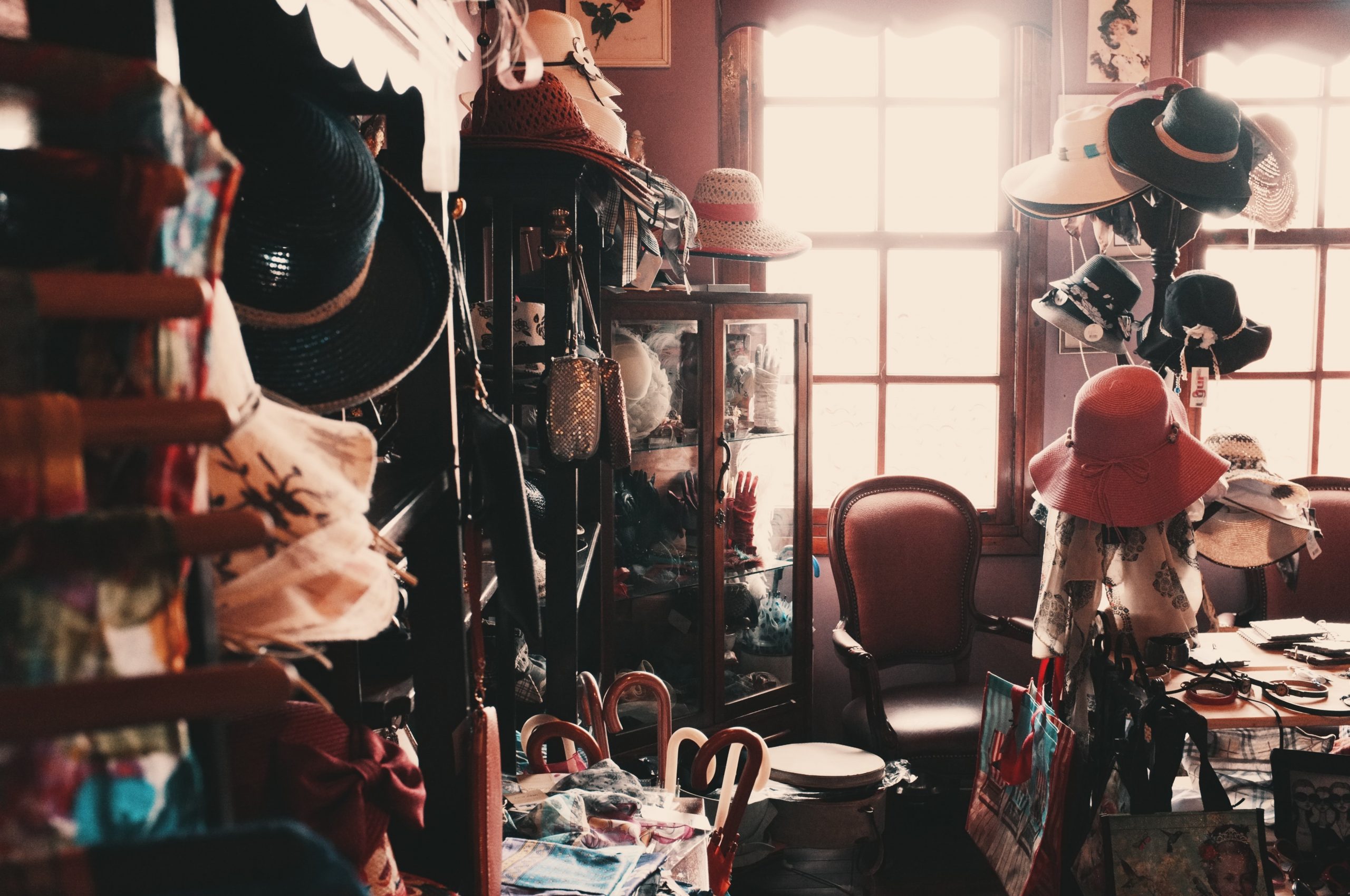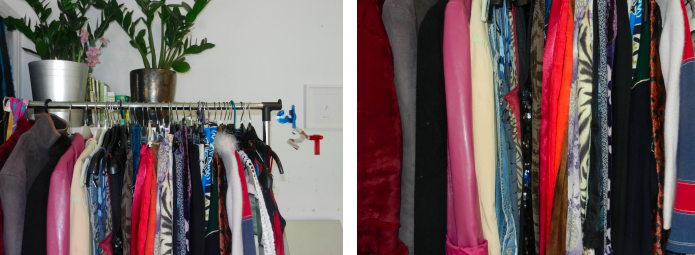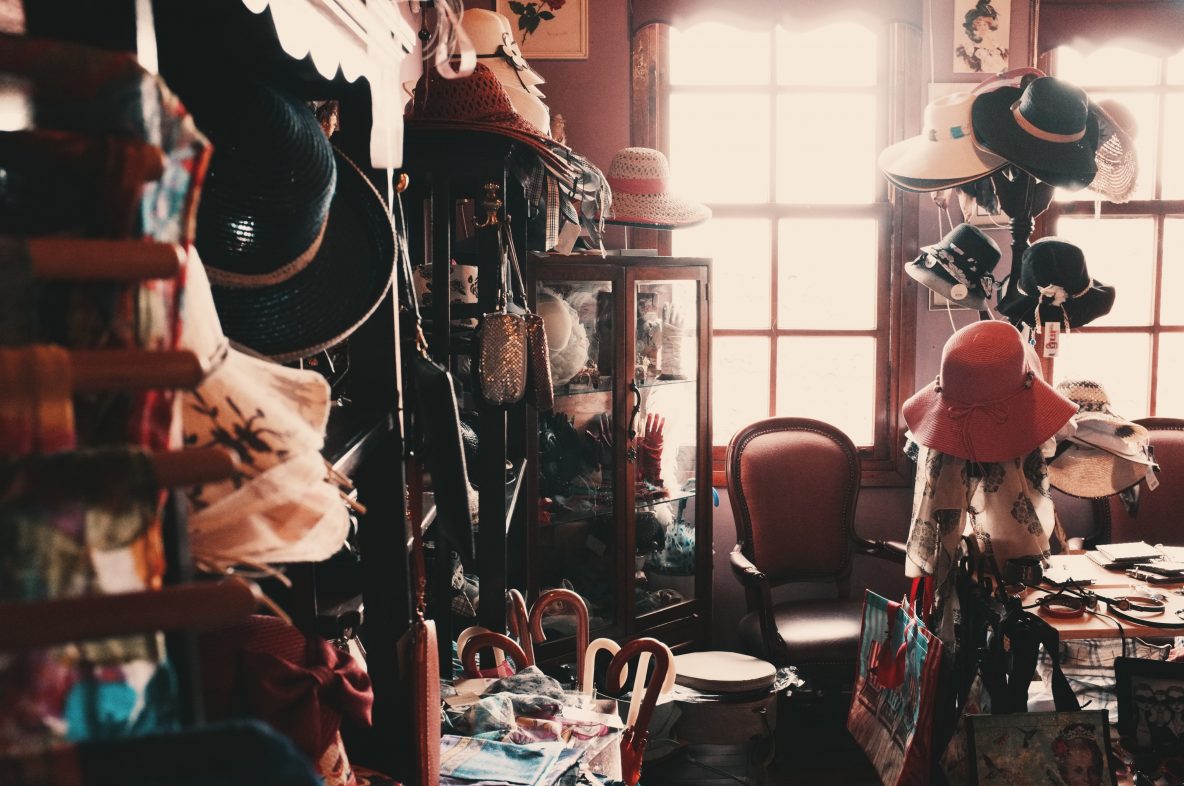SHIFTING TO THRIFTING
Why you should take part in Oxfam’s #SecondHandSeptember and uplift your wardrobe, whilst shrinking your carbon footprint.
By Andrea Loftus

Photo by Onur Bahçıvancılar on Unsplash
Mom jeans? No, flares! Or is it culottes? Crop tops are sooo in, but really it’s all about the boob tube. But wait, now you’re telling me I’m meant to wear cycling shorts with...a blazer?
Keeping up with new trends is beyond exhausting, and the compulsion to do so is resulting in the clothing industry being more of a hazard to our planet than planes. The fashion industry revolves around “out with the old and in with the new”: the seasonal rotation of clothing in high street shops means we feel pressured to clear out our wardrobes to make space for whatever everybody else is wearing this month.
Oxfam, a well known organisation trying to combat poverty, is aiming to eradicate this ‘buy and bin’ mentality with #SecondHandSeptember. The premise is encouraging people to make a month long commitment to saying NO! to the temptations of fast fashion by opting to wear what they have, or to purchase from charity shops and vintage stores instead.
Every week, the UK alone sends around 11 million items of clothing to the landfill, whilst 57% of all discarded clothing ends up there in the end. These figures are only being churned out at the end of the manufacturing line, with many more items being discarded earlier in the process. Making a single pair of jeans uses around 13 years worth of drinking water, and the carbon footprint of a pair of Levi 501 jeans is 33.4kg of CO2 eq (carbon dioxide equivalent). Yet most thrift stores around the country boast Levi-specific denim displays that'll make your mouth water! But this is just a drop in the ocean, with emissions from transport deliveries, non-recyclable packaging and textile-waste constituting additional issues, all caused by our modern materialism. That's not even touching on the ethical issues that fast fashion sweeps under the carpet: sweatshops and factories harbouring workers in awful conditions with wages will below minimum.
Lots of brands have realised that people are cottoning on to the realities of waste within the fashion industry, and have begun ‘greenwashing’.
Not familiar with this word? It was coined in the 1980s and generally means a brand or company make “an unsubstantiated or misleading claim about the environmental benefits of a product” by weaving words like “sustainable” and “eco-friendly” into their branding. A recognisable high street brand guilty of this is H&M, along with their sister brand & Other Stories, with H&M’s website even donning a header link for ‘Sustainability’ that leads you to a long list of vague sub-links for clothes garnished with the word ‘conscious’. Ironically, it’s been revealed that the brand was found to not even pay the majority of its overseas supply workers the living wage, meaning even if the product is boasting of being sustainable, the process behind it isn’t.
I was like any other child when encouraged to delve into the material jungle of a charity shop: entirely overwhelmed by the technicolour textile trail of jumpers and joggers and jumpsuits. No big brands and a funny closet smell? It was a no from me. Fast forward a few years of crying in changing rooms because I didn’t fit the inconsistent sizes supposedly made for my age group and my Christmas money salary meant I couldn’t afford to keep up with my friends’ Topshop obsession - I’d had enough.
I noticed that whenever I really liked an interesting item of clothing on a friend or a stranger, it was always second hand and stood out because herds of Year 9s weren’t using it as their weekend uniforms. After receiving a few recommendations from a friend, I set off to my local charity shop to give it a go. It’s safe to say the rest was history, and today the majority of my wardrobe is made up of second hand garb.

I used to always feel like I had to have a reason to buy a dress , but when the price tag isn’t intimidating, it’s fun to see the range of textiles, colours and styles available to you with a whole history behind them.
Where to start?
-See what’s out there. Get onto Google Maps and search ‘charity shop’, and the pins should start popping up. The variety available depends on the surrounding area and the type of people who are likely to be donating to the shops.
-Have a wander. It’s likely that there are more charity shops about than you thought, and getting to know the level of stock and what’s available will help you to work out which ones are worth a visit. An old Boot-fair can also be a laugh, to sell or buy, and there are more vintage stores popping up than ever before. Abroad there are endless markets and stalls with intimidating piles of clothes, but take the time to rummage and you might find that skirt you’ve been pining for for only two euros.
-See what feels like you! I went from being a black-clad kid who didn’t stray from the moody hues because I’d heard they were ‘slimming’, to quite happily throwing every colour under the sun into one outfit.
-Make a pop up shop / swap shop! I recently collected a bunch of clothes that no longer felt like - or fitted - me, and offered them to my friends. This slightly strange but surprisingly fun move meant I could offload clothes I no longer wanted, content that they were going to be worn several new times by a happy new owner. Or you can swap clothes with your friends and make a fun evening of it! #Reuse is the new #Recycle!
-Will you wear it 30 times? This is a good premise to ensure you don’t get a bit carried away buying everything you like just because it’s under a tenner. I panic-bought a dress earlier this year at ZARA because I was afraid of not being dressed appropriately for a niche event, and instantly regretted it once I realised nobody cares! Recognising you don’t need to buy a new top for a night out or a new coat every winter is truly a weight off your shoulders.
-Have your clothes on display. Where possible, hang your clothes up where you can actually see them, or fold them Marie Kondo style in your drawers so you remember what you've already got! You'd be surprised how many items slip under your radar when they slip to the back of the cupboard.
-Don’t get overwhelmed. I’m not saying you have to sift through every single hanger just in case your future favourite jacket is stuffed in the back. Scan the rails to see if any colours, patterns, fabrics or styles stand out to you that day.
-Go online! There are now amazing clothes and brands available on Ebay, Etsy and Depop that can satiate your designer cravings at a fraction of the cost.
-Have fun! We’ve all seen Wild Child, and marvelled at the glorious chaos that unfurls when their only shopping option is a charity shop in a country village. Whatever you throw on behind that curtain, you are under no obligation to buy it or ever show anyone, but every unique piece you connect to had a whole life before you, and is waiting to bring you closer to that Malibu moment! So do a Poppy and get upcycling, or just marvel at the spunky ‘vintage’ steal you can now boast about to all your friends and family. You never know, you might inspire them to take the plunge with you!
Following people and brands with a consistent mindset about consumption is a great way to get you geared up for the month ahead.
A personal inspiration of mine is Jenny Welbourn, most commonly known by her multi-platform handle @wearilive. Jenny has gone on her own fashion evolution journey and uses her popular YouTube channel and Instagram profile to advise others on how to craft a more sustainable wardrobe and still look damn good. As well as encouraging the younger generation to say farewell to corporate capitalism, Jenny has also crafted a very useful list of ethical brands to look into.
Another great source of trustworthy information is Stories Behind Things, founded by Ella Grace Denton and Jemma Finch who met at The University of Leeds. The two wonder-women collaborated to ‘excite & empower individuals to live consciously’ and ultimately ‘celebrate the meaning behind what we consume’ by telling the story behind it.
Realising that a world existed where I wasn’t confined to a certain rack and clothes that only look good in a certain size opened up a whole new style for me. My style choices nowadays mean my money goes to charity and I save a textile-nomad from having its own Toy Story 3 style incinerator nightmare.
Now if you’re a bit Green Day-esque when it comes to September, and are already waiting for it to end so you can reunite with the tempting Urban Outfitters window displays, just keep some things in mind.
When you’re buying things new, look for garments made with natural fabrics like hemp from reputable sustainable brands. Remember it’s better to invest in an item of clothing you’ll get good wear out of rather than buy several cheap items you’ll forget about in a week. Also, look into documentaries like ‘The True Cost’ to remind you that if something seems like a steal, it’s often because whoever is making it paid the price. Executive produce Livia Firth, the mastermind behind the ‘Green Carpet Challenge’ that styles big names on the red carpet in eco-friendly fashion , is an advocate for promoting conscious living, and reminds us that each one of us can ‘become an active citizen through your wardrobe.’
Intrigued enough to take the pledge?
Sign up here for inspiration and styling tips to keep you on the straight and narrow.
Words by
Share this article

